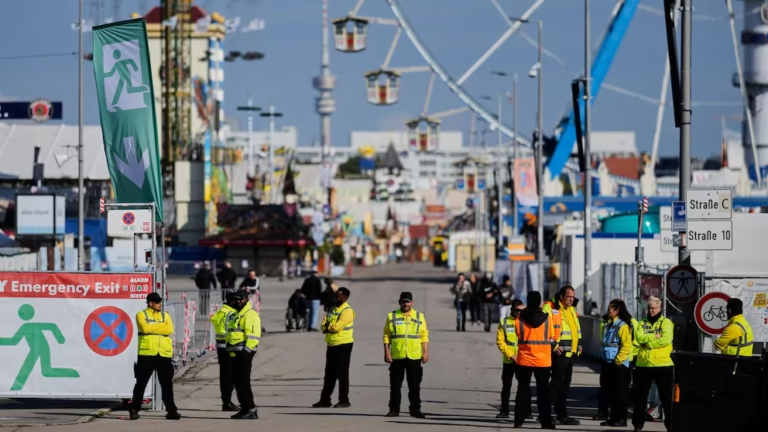Table of Contents
What Triggered the Violence Eruption This Time?
Violence erupts again as border tensions between Thailand and Cambodia reach a boiling point. This latest clash marks yet another chapter in the ongoing conflict that continues to shake the region. Shots were fired. Artillery echoed. Civilians fled.
The Thai-Cambodian border has long been a hotspot for territorial tension. But now, violence erupts again in ways that are reigniting fears across Southeast Asia. While both governments point fingers, local communities are the ones feeling the real shockwaves.
Shooting incidents, military deployment, and nationalistic rhetoric have returned—marking a dangerous escalation not seen in years. It’s not just about land anymore. Politics, history, and pride are also fueling the fire.
A History of Conflict with No Clear Ending
The roots of this conflict date back decades, especially around the disputed Preah Vihear temple area. Even though the International Court of Justice gave its verdict years ago, the issue has remained an open wound.
National pride and political pressure on both sides have kept the issue alive. Previous ceasefires often came with conditions—and now it seems those deals are unraveling again.
When violence erupts again along this border, old traumas are reopened, and peace feels painfully distant.
Military Moves and Escalation on Both Sides
The situation has escalated rapidly. In recent days:
- Thailand has mobilized tanks and heavily armed vehicles near the northern crossing.
- Cambodia responded with artillery fire, claiming defensive action.
- Both countries blame each other for initiating the violence.
While no full-scale war has been declared, these military movements make observers nervous. Even small provocations could spiral out of control in such a charged environment.
Baca juga: Meta Rilis Fitur Baru Lindungi Akun Remaja dengan Efektif
Why Does Violence Keep Returning?
This isn’t just about a line on a map. Deeper issues feed into the violence:
- Historical resentment: Centuries of unresolved disputes.
- Political distraction: Leaders under pressure often stir nationalist emotion.
- Resource competition: The border areas are rich in natural resources, especially timber and potential oil.
- Cultural claims: Each side sees itself as the rightful guardian of sacred territory.
When violence erupts again, it’s a signal that diplomacy has failed to address the root causes.
Impact on Civilians and Local Economies
As usual, the ones hit hardest are the people living near the border. Families have had to evacuate. Farmers are abandoning fields. Trade has come to a halt in many zones.
Reports from local news indicate damage to:
- Schools and community buildings
- Local businesses and trade routes
- Communication infrastructure
The emotional toll is even worse. Families are divided, and many live in constant fear of the next explosion or gunfire. Lives are being upended, and the region’s stability is once again on shaky ground.
Regional Response and International Worry
ASEAN has expressed concern and is urging both parties to return to dialogue. Meanwhile, international observers are closely monitoring the situation, worried that violence may spill over or draw in neighboring nations.
Even the UN has voiced alarm, with some diplomats calling for peacekeeping oversight if things worsen.
This renewed aggression has caught global headlines—because it’s not just about Thailand and Cambodia anymore. It’s about regional peace.
What Can Be Done Now to Calm the Fire?
De-escalation is crucial. But how?
- Direct talks between military leaders could open a path to de-escalation.
- Independent investigation into the clashes may reveal who’s pushing the violence.
- International mediation could help calm nationalist tempers and rebuild trust.
More than anything, both countries need to prioritize the safety of their people—not their pride.
A Turning Point or Just More Turmoil?
The fact that violence erupts again should be a wake-up call—not just for Thailand and Cambodia, but for all of Southeast Asia. Tensions like these, if left unchecked, could undo decades of diplomacy and growth in the region.
This moment could either be a turning point toward resolution—or yet another chapter in a cycle of conflict. The world is watching closely, and so are the people who live in fear along the border.
Baca juga: Fashion Pick: Charli XCX Rocks Bold Anti-Bride Look
For real peace to happen, it will take more than ceasefires and press releases. It requires real political will, accountability, and an honest desire to move past old wounds.
If cooler heads prevail, there’s hope. But that hope is fading every time the violence returns.



https://shorturl.fm/FJhn0
https://shorturl.fm/srsrY
https://shorturl.fm/Oi67f
https://shorturl.fm/autZ0
https://shorturl.fm/HfmZn
taking creatine while fasting
References:
Does Creatine Help Build Muscle Fast (Topspots.Cloud)